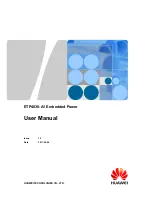
years. Old gasoline will gum up the carburetor and require extra maintenance.
Propane (LP)
Use clean, fresh HD-5 grade liquefied petroleum gas (LP) or equivalent product consisting of at least 90%
propane. Commercial LP fuels may contain more than 2.5% butane, which can result in poor fuel
vaporization and engine performance in ambient temperatures below 32 degrees Fahrenheit.
Engine Oil Recommendations
Use API (American Petroleum Institute) performance class SJ engine oil or better. Also look for the SAE
(Society of Automotive Engineers) viscosity grade. Referring to Fig. 11 below, choose the viscosity grade
appropriate for the ambient temperatures expected until the next scheduled oil change. Single-grade SAE
30 oil is preferable when temperatures are consistently above freezing. Multi-grade oils are better when
wide temperature variations are expected.
NOTE:
Maintenance schedule must be followed even when using synthetic oils.
Expected Ambient Temperatures
SAE Viscosity Grade
32
o
F (0
o
C) and higher
30
10
o
to 100
o
F (-12
o
to 38
o
C)
15W-40
0
o
to 80
o
F (-18
o
to 27
o
C)
10W-30
10W-40
-20
o
to 50
o
F (-28
o
to 10
o
C)
5W-30
Fig. 11
Starting Batteries
A minimum battery rating is 450 CCA (cold cranking amps) at 0 degrees Fahrenheit for both gasoline and LP
models.
Exercising The Generator
Exercise the generator at least two hours each month if used infrequently. Run the generator at
approximately half rated power, about 15 amps. See Loading the generator above. A single two hour exercise
period is better than several shorter periods.
Exercising the generator drives off moisture trapped in the engine crankcase and lubricates the engine,
replaces stale fuel in the fuel lines and carburetor as well as removes oxides from electrical contacts. The
result is better starting performance, more reliable operation and longer engine life.
30










































